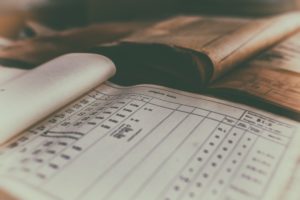
Supposing you were asked to sit down right now and, from memory, write a list of everything of value or importance in your home. That would include everything from jewelry and clothing, through computers and appliances, to furnishings.
How well do you think you’d do? Experience suggests you’d overlook some major items. 
Yet, that is exactly what you’d have to do if your home was burglarized, damaged or destroyed.
How to Create a Home Inventory
The idea behind a home inventory is to simplify the insurance and crime reporting process after a loss by having an already updated list of your personal property, instead of relying solely on memory.
One approach is to walk around your home with a notepad and make a list of what’s in each room or do a video walk through.
Another technique would be to download a template or an app that provides a checklist for you to complete.
Many templates are free. Simply do a search in your web browser on the term “free home inventory template”. You can do the same sort of search for apps. But here’s a shortcut, listing some of the best apps currently available: The Balance: Best Home Inventory Apps of 2022
Make sure you store your list in a safe place. By all means keep a copy with your insurance records, but have a master version in your safe deposit box or, these days, in the cloud or other offsite storage system.
What to Include in a Home Inventory
Keep your receipts – this is important with more valuable items.
Keep a record of serial numbers or other identifying numbers – which are commonplace on electronics items and appliances. 
It is likely that your homeowner’s or renter’s insurance policy includes coverage for possessions you store offsite, for example in a self-storage unit. Know the details of your insurance coverage and include these items in your inventory.
Benefits of Creating a Home Inventory
In addition to going easy on your memory, having an up to date inventory will enable you to more accurately value the contents of your home, which could be crucial in ensuring your homeowner’s or renter’s insurance provides adequate coverage for your personal property.
It’ll save you time if or when you file a claim or have to make a report to police.
If an item has been stolen and your inventory includes a video or photo record, this could make it easier to track down, especially if you have also recorded serial numbers.
In the case of a partial loss, it will provide you with a checklist you can use to review what has been lost or damaged.
It will also ensure that you maximize a claim value by including everything, and not excluding items you might otherwise forget.
What to Do Next
Certain high-value items or collections may require separate, additional coverage (also known as scheduled property). You may be asked to provide a professional appraisal. Examples of these types of items are jewelry, silverware, fine art, stamp & coin collections, musical instruments, firearms, and expensive cameras.
The reason it is important to schedule items is because insurance companies often put limits on certain items and will only insure up to a specific limit per item. These limitations are listed in the Coverage C section of your homeowner’s policy.
An optional coverage to consider is Special Perils Content Coverage. This option broadens the coverage on all your personal property. If you have a lot of valuables, this is a recommended.
It is always a good idea to speak with a Cheney Insurance agent. If you have questions about whether your current policy has adequate coverage for your personal property, please contact us. We would love to talk with you.
